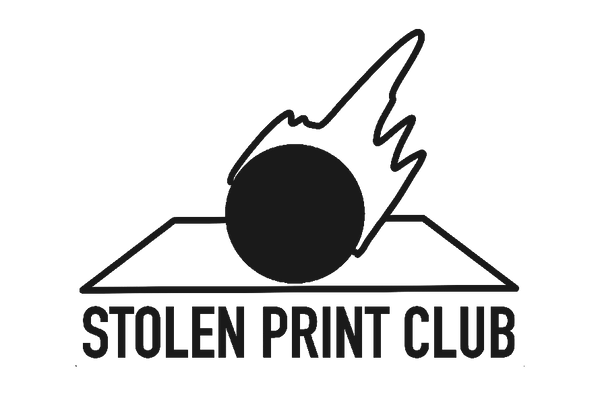Explore the Art: Printmaking Techniques Glossary
Welcome to our world of artistry, where each print tells aunique story through diverse printmaking techniques. Understanding the methods behind the masterpieces enriches the experience of owning and appreciating
these exceptional artworks. Here's a glimpse into the techniques that bring our prints to life!
1. Plate printing techniques
Plate printing techniques involve creating a design on a flat surface, either by carving away material (relief) or incising lines into the surface (intaglio). These methods offer a spectrum of visual effects, from bold and textured to intricately detailed prints. In contrast to lithography, which relies on the chemical properties of the printing surface to achieve its distinctive visual effects, plate printing techniques emphasize the physical manipulation of the printing surface, resulting in bold textures and intricate details.
Relief Techniques
Relief techniques involve carving the design onto a surface, creating raised areas that capture ink for printing. This method results in visually impactful and textured prints.
Linocut:
Designs are meticulously carved into linoleum, creating raised surfaces that are inked for printing. The result is bold, expressive prints with a distinctive texture.
Woodcut:
Similar to linocut, woodcut employs wood as the carving surface. The design is carved into the wood, and the raised areas capture ink, yielding prints with a natural and organic feel.
Intaglio Techniques
Intaglio techniques involve incising or etching the design into a plate. The ink is applied to the incised lines or areas, creating prints with intricate details.
Drypoint:
Lines are delicately incised into a plate, often metal or acrylic (usually PET), using a hard-pointed needle, creating lines with a characteristic burr for a textured appearance. Sometimes, a soldering iron with a fine tip can be used for drawing or incising lines on the plate. The heated tip of the soldering iron melts and displaces a small amount of metal, creating textured lines. Artists can control the width and depth of the lines by adjusting the pressure and temperature of the soldering iron. Ink is applied to the incised lines, producing prints with intricate details and rich textures.
Etching:
A metal plate (usually copper or zinc) is coated with an acid-resistant substance. The artist then uses a needle to scratch through this ground, exposing the metal underneath. The plate is then immersed in an acid bath (caustic soda), which when applied selectively, eats into the linoleum, creating recessed areas. The ink then adheres to the etched lines, resulting in prints known for their clear lines, precision, and fine detail. This technique requires careful control of the acid biting process and skill in creating detailed lines.
Combination Techniques
Combination techniques merge different printmaking approaches, offering a hybrid of visual effects and textures.
Etched Linocut:
An innovative fusion of relief and etching, where linoleum blocks are etched to create detailed lines or unpredictable textures, producing prints with a dynamic blend of depth and texture. In this technique, the linoleum block is prepared using an etching process to create detailed lines or textures. This might involve using etching needles or other tools to incise lines into the linoleum surface. After the etching process, the linoleum block is inked, and relief printing is carried out. The ink adheres to the raised areas of the linoleum, and the print is made by transferring the inked image onto paper.
Mokulito:
A harmonious marriage of woodcut and lithography, Mokulito involves creating an image on wood and using lithographic principles for printing. An image is created on plywood using wax crayons and lithographic inks. These wear off during the printing process so only a few prints can be pulled, and the result differs from print to print making each one very unique. The mokulito prints showcase the unique union of relief and planographic elements.
2. Layering Techniques
Relief and intaglio techniques can also be layered to create even more intricate and textured prints, particularly when combining different colors. Layering techniques involve building a print in multiple stages, each layer contributing to the final composition. This approach allows for complexity and depth in the artwork.
Monoprint:
Ink is painted on a plastic plate and then printed onto paper. After printing there is hardly any ink left on the plate. Only one (mono) print can be done, creating a one-of-a-kind piece, offering artists the freedom to experiment and create unique variations.
Monotype:
A monotype is a combination of monoprint and drypoint intaglio. A monoprint is created using a PET plate that has been incised through drypoint techniques prior to coating it with ink.
Reduction:
Reduction layering is a fascinating and complex printmaking technique that involves using a single printing block for a multicolor print. The process requires successive carving and printing stages on the same block, leading to a reduction in the available surface area with each layer. This technique demands careful planning, precise execution, and a willingness to embrace irreversible changes throughout the creative process. This technique is used to print with different colors in layers, resulting in stunning multicolored prints.
Multiblock (2-block, 3-block, 4-block):
A printing technique that uses multiple blocks, each representing a specific layer of color. The blocks are printed in registration to create intricate, multicolored masterpieces. Achieving accurate color registration becomes more difficult with each additional layer, so multiblock printing requires a level of precision that increases in complexity as more blocks are used.
3. Manual Interventions
Manual intervention can be applied to various printmaking techniques, involving additional handwork or embellishments, such as the use of acrylic or oil paints to color backgrounds.
Dive into the world of rintmaking techniques, where every stroke, cut, and layer contributes to the visual symphony of our curated collection. Explore the nuances, discover your favorites, and bring home a piece of art that tells a story beyond the canvas.
